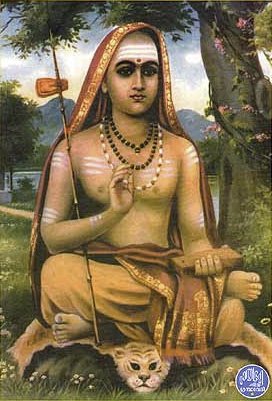Katha Upanishad with Shankara’s Commentary
by S. Sitarama Sastri | 1928 | 23,822 words
The Katha Upanishad is a collection of philosophical poems representing a conversation between the sage Naciketas and Yama (god of death). They discuss the nature of Atman, Brahman and Moksha (liberation). The book is made up of six sections (Valli). This commentary by Shankara focuses on ‘Advaita Vedanta’, or non-dualism: one of the classical ort...
Verse 2.3.15
यथा सर्वे प्रभिद्यन्ते हृदयस्येह ग्रन्थयः ।
अथ मर्त्यो'मृतो भवत्येतावद्ध्यनुशासनम् ॥ १५ ॥yathā sarve prabhidyante hṛdayasyeha granthayaḥ |
atha martyo'mṛto bhavatyetāvaddhyanuśāsanam || 15 ||15. When here all the knots of the heart are sundered, then the mortal becomes immortal. Thus, much, the instruction.
Shankara’s Commentary:
Com.—When again, the up-rooting of all desires takes place is explained. When all the ties of the heart of one, while yet alive, i.e., all the modifications of the intellect due to ignorance which are in the nature of fast-bound knots are destroyed; when the ties of the heart, i.e., such as the beliefs ‘I am this body,’ ‘this is my wealth,’ ‘I am happy or miserable,’ etc., are destroyed by the rise of the contrary belief in the identity of the Brahman and the atman, in the form ‘I am certainly Brahman not subject to Samsara’ the desires which originate in those ties are destroyed to their very root; then the mortal becomes immortal. Thus much alone—the doubt that there is more should not be raised—is the instruction. Of all the Vedantas’ should be supplied to complete the sentence,
